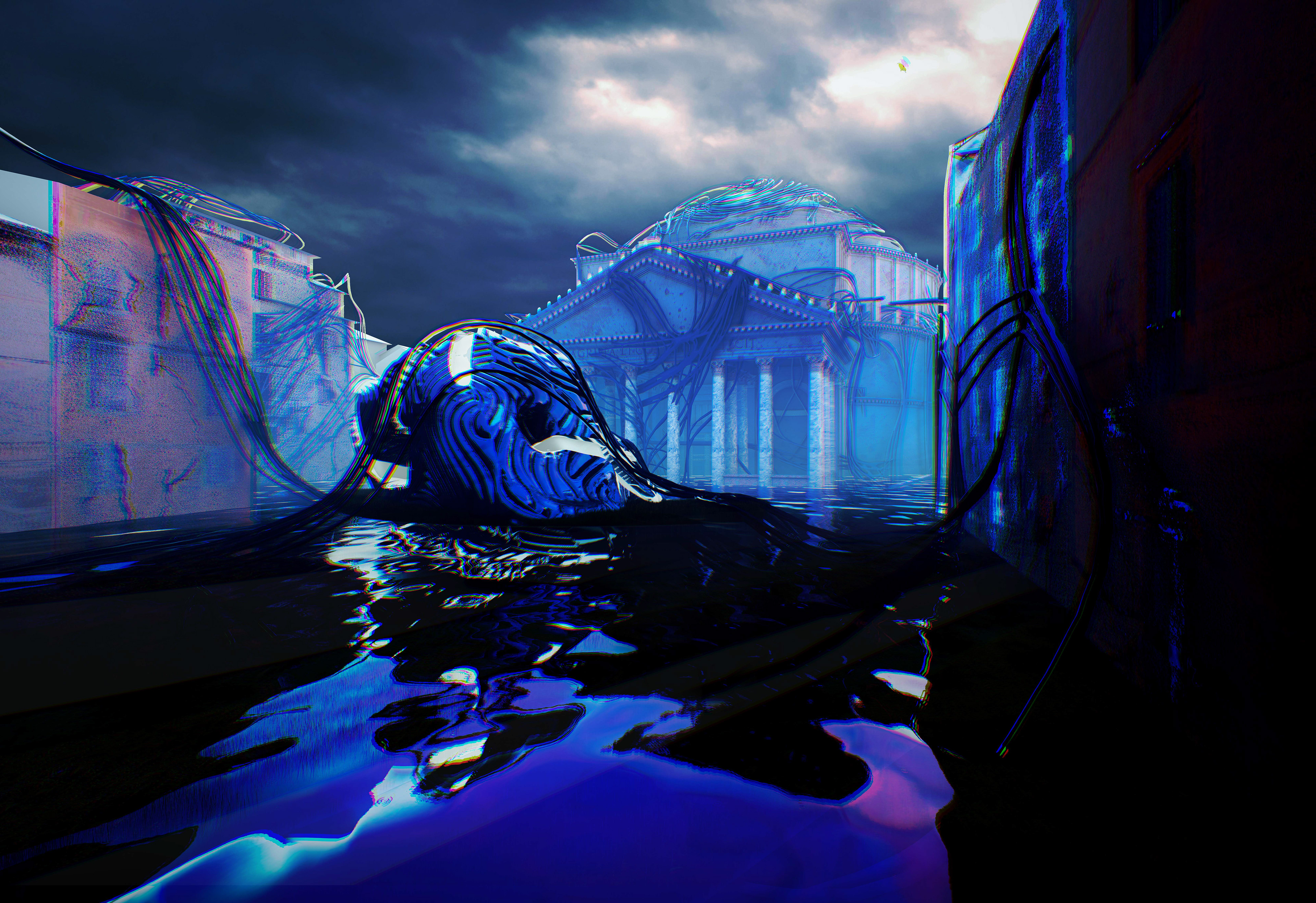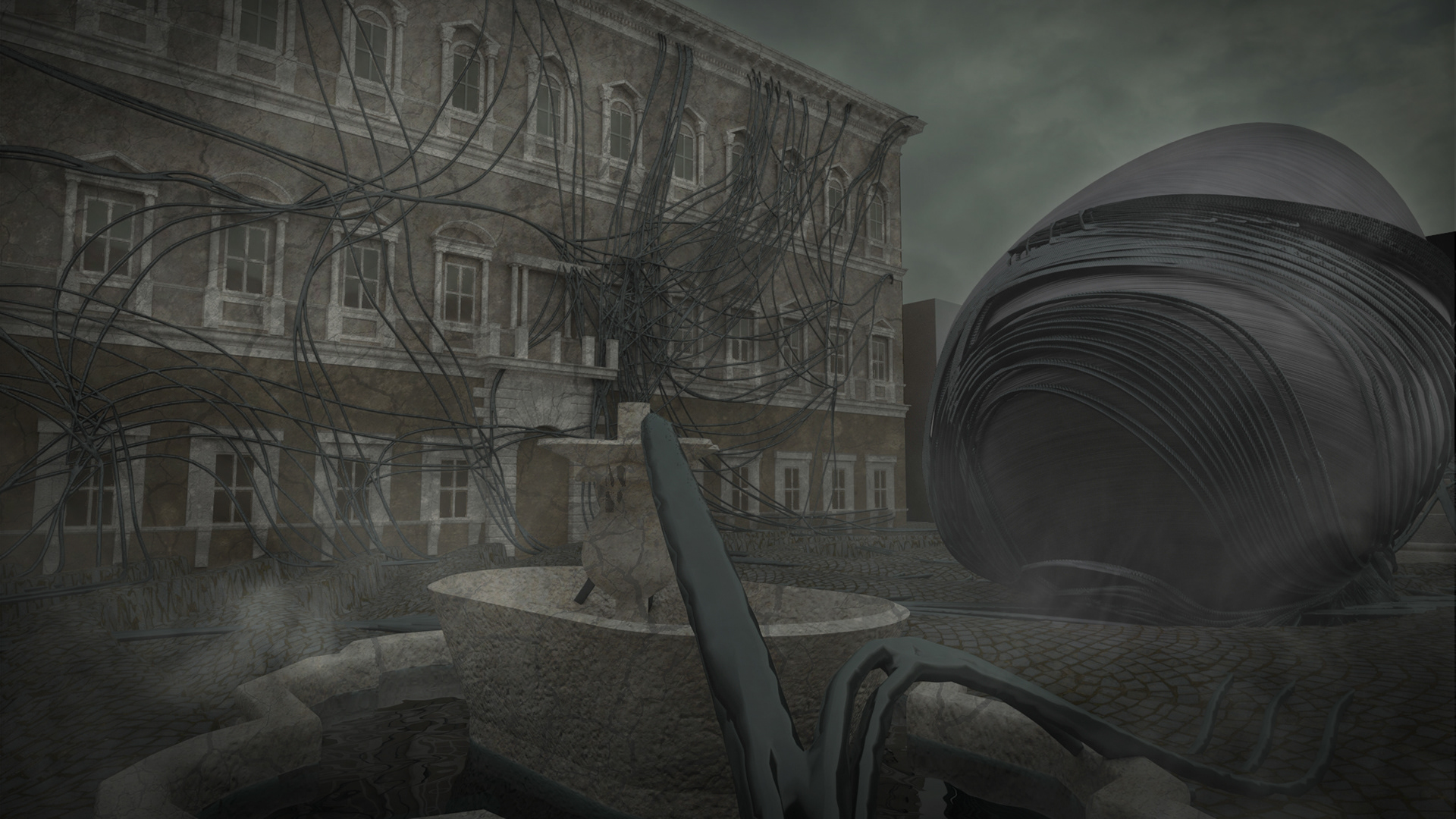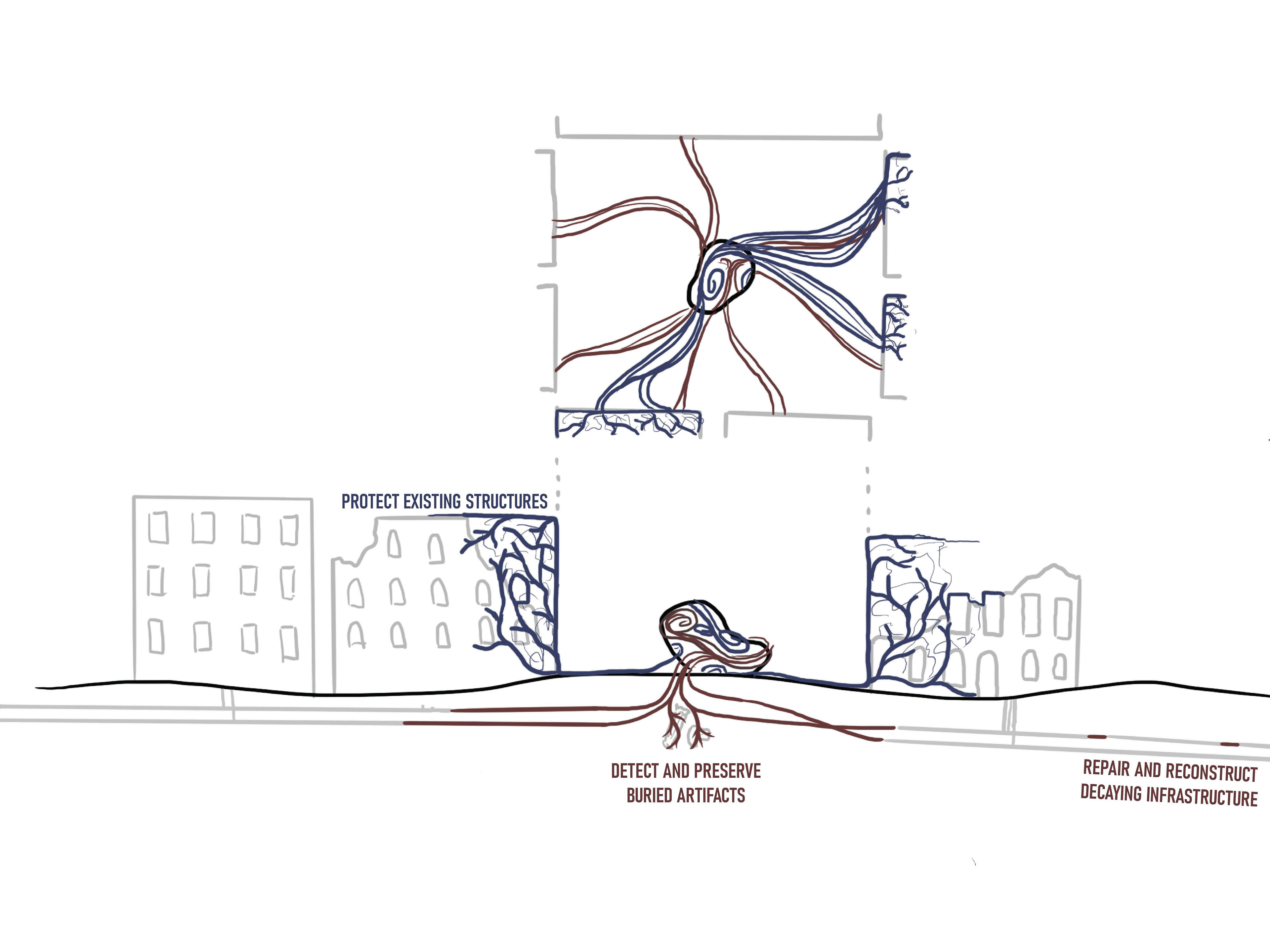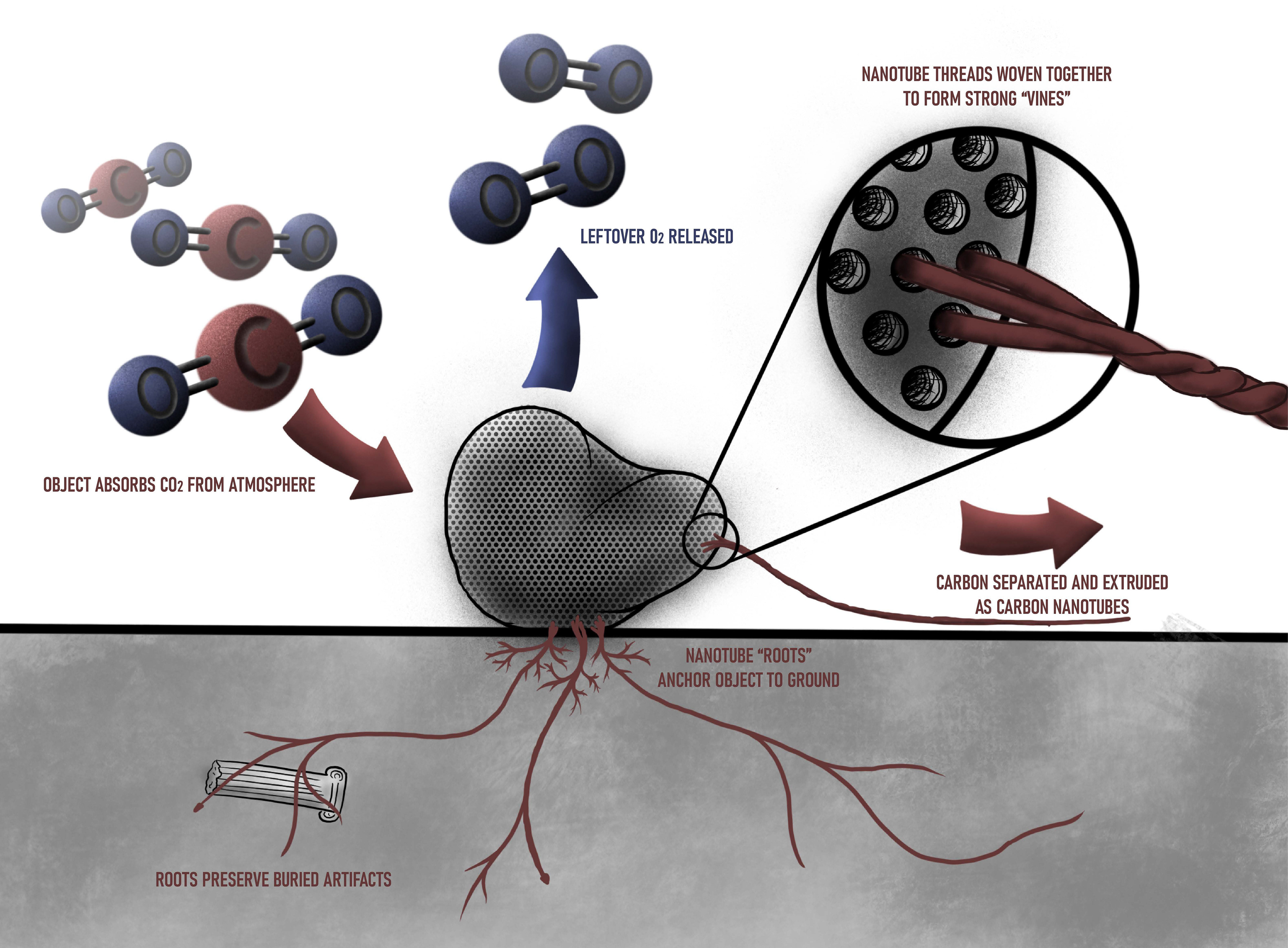As one such coastal city, Rome has become the hub for a new experiment, using technology never before seen on such a scale; while I regret that the world has a need for this intervention, I must say that the threat of imminent global extinction has united our focus as a species and resulted in a tremendous technological push. The experiment in question involves a series of strange semi-spherical objects, which look almost alien among the ancient palazzos and churches of Rome. Like seeds planted in every large piazza throughout the city, these objects act in much the same way a plant does—taking in carbon dioxide from the atmosphere and releasing the breathable oxygen back into the environment—but at a significantly higher rate. The key to these objects, however, is what they do with the extracted carbon atoms. After separation, the lone carbon atoms join together in a single sheet, called graphene, which on its own is one of the strongest materials known on Earth. Several of these sheets are then rolled into tubes, creating a MWCNT (Multi-Walled Carbon Nanotube). These threads, while extremely strong, are only about 20-30 nanometers wide. The object’s outer wall is covered in microscopic pores through which these nanotubes are extruded, and millions of threads are woven together to create a nearly indestructible ‘vine.’ These vines, which contain sensors and advanced nano-technology allowing them to move and understand their surroundings, grow outward from the object and latch onto nearby structures. Their purpose is to protect the buildings and limit damage from storms and flooding in the hopes that we may one day
be able to return and re-inhabit the city.
be able to return and re-inhabit the city.


Like the vines above ground, these objects also extrude nanotube ‘roots’ below ground to perform a multitude of tasks. Firstly, they serve as a makeshift foundation by anchoring the object to the ground in the same way a tree would. These objects were dropped in from above, as it would have been impossible for them to be constructed on-site, so these roots make up for the lack of a traditional concrete footing. Their primary task is much the same as the vines above, but focuses on the protection of buried infrastructure and undiscovered artifacts which could be destroyed by the rising water level. Together, these roots and vines are intended to provide a defensive barrier to protect the history of the city of Rome. These objects have been in place for several years now, and the fact that Rome is still standing strong while many other coastal cities have fallen beyond repair indicates that they are certainly doing their jobs. We are still years off from any solution with potential to bring human life back to the city, but I now have faith that when that day comes, we will have a home to return to. Despite the triumph this is in our world today, it should never have come to this in the first place. I urge you to learn from our mistakes (the same ones that you are making now)
and understand the gravity of your situation. You must act to prevent this now, so that you don’t have to clean up the ruins later.
and understand the gravity of your situation. You must act to prevent this now, so that you don’t have to clean up the ruins later.

